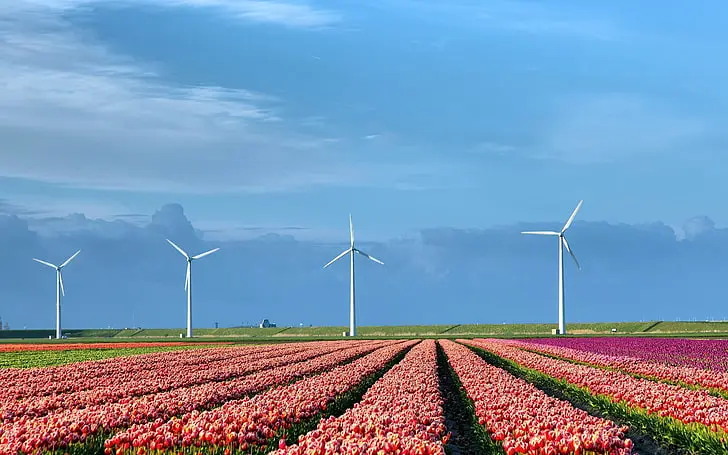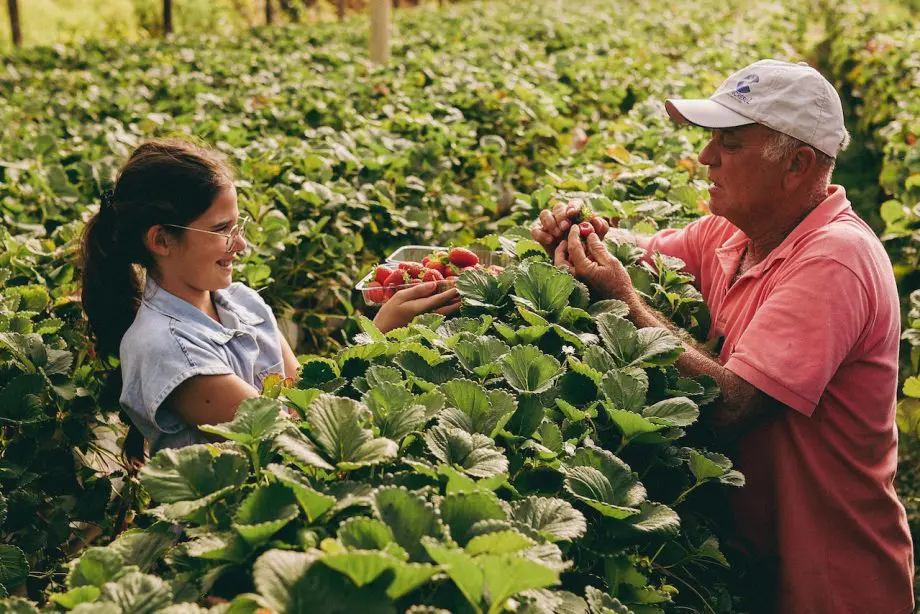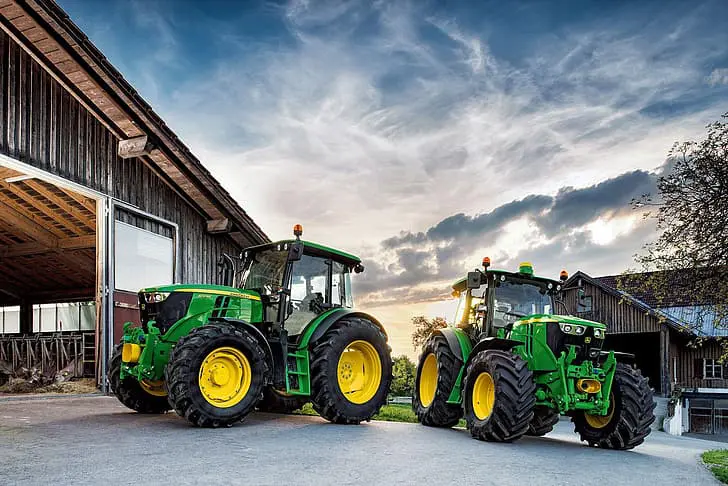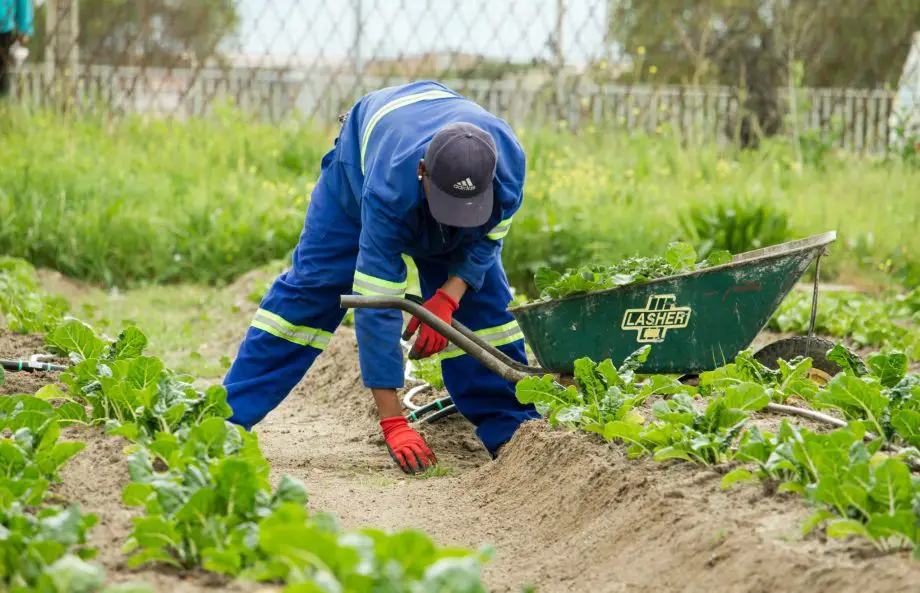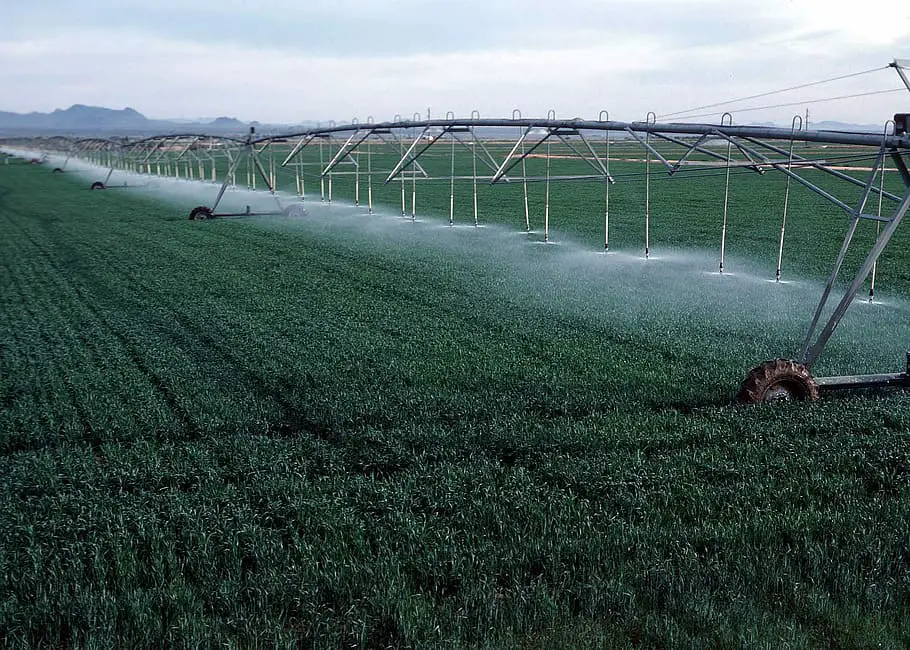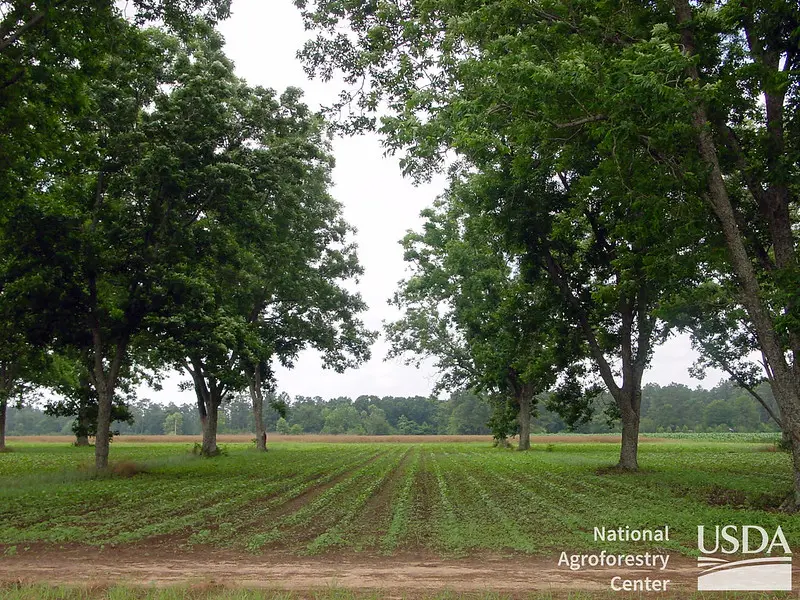
Discover how greenhouses enable year-round farming, boosting crop yield and offering a controlled environment for sustainable agriculture. Get the inside scoop!
Ever wondered how greenhouses enable year-round farming?
Imagine enjoying fresh tomatoes in winter or herbs that usually wilt in the summer heat, all thanks to the magic of greenhouses.
Stick around as we dig into the science and benefits that make this agricultural wonder a game-changer for farmers and foodies alike.
How Greenhouses Enable Year-Round Farming
Greenhouses enable year-round farming by creating a controlled environment that regulates temperature, humidity, and light. This allows for optimal crop yield regardless of external weather conditions. With climate control and soil management, farmers can grow produce consistently throughout the year.
So, you’re curious about how greenhouses enable year-round farming, huh?
Well, you’ve landed on the perfect read. We’re going to explore everything from the nitty-gritty science behind these plant havens to the real-world benefits that have farmers and environmentalists raving.
We’ll even dive into some case studies and tackle common challenges. Trust me, by the end of this post, you’ll be a mini-expert on the subject!
Definition of Greenhouses
First things first, let’s talk about what a greenhouse actually is. Picture a structure, often made of glass or plastic, that’s designed to trap heat from the sun.
It’s like a cozy little vacation spot for your plants! But it’s not just about keeping them warm; greenhouses also offer a controlled environment where you can manage everything from temperature to humidity to light exposure.
Think of it as a customizable paradise where plants can thrive, no matter what Mother Nature has in store.
Importance of Year-Round Farming
Now, why is year-round farming such a big deal? Well, traditional farming is like a roller coaster and full of ups and downs depending on the season.
You’ve got your planting seasons, your growing seasons, and then those long, barren months where nothing much happens.
But with a greenhouse, it’s like having an “always open” sign hanging on your farm.
You can grow crops all year, which means a consistent supply of fresh produce and let’s be honest, who wouldn’t want fresh strawberries in December?
Brief Overview of What the Article Will Cover
Alright, now that we’ve set the stage, let’s talk about what you can expect from this article.
We’re going to delve into the science that makes greenhouses tick, from the greenhouse effect to climate control.
We’ll also look at the benefits, like increased crop yield and sustainable farming practices.
And because we know you’re curious, we’ll share some real-world examples and even discuss the challenges and future of greenhouse farming.
So buckle up; it’s going to be an enlightening ride!
Historical Context

Ready for a trip down memory lane? Let’s talk about the historical context of greenhouses.
You might think these high-tech plant sanctuaries are a modern invention, but you’d be surprised!
Greenhouses have a rich history that spans continents and centuries. So sit back as we journey through time to explore how these agricultural marvels have evolved to become the game-changers they are today.
Trust me, it’s a story worth hearing!
Brief History of Greenhouses
So, where did this whole greenhouse concept come from? Believe it or not, the idea dates back to the Roman times.
Emperor Tiberius had a thing for cucumbers, and his gardeners used transparent mica stone slabs to create a primitive greenhouse.
Fast forward to the Renaissance, and we see the Europeans getting in on the action, using greenhouses to grow exotic plants brought back from their voyages.
It’s like each era added its own twist to the greenhouse story, making it richer and more fascinating.
Evolution of Greenhouse Technology
Now, let’s talk about how greenhouse technology has evolved, because, let’s face it, we’ve come a long way from stone slabs and basic wooden frames.
Today’s greenhouses are like the smartphones of the farming world packed with features and incredibly user-friendly.
We’ve got automated climate control systems, energy-efficient materials, and even smart sensors that monitor plant health.
And it’s not just for the big players because advancements in technology have made greenhouses accessible for small-scale farmers and even backyard gardeners.
It’s like upgrading from a flip phone to the latest smartphone; the basic function is the same, but oh, the things you can do now!
So there you have it, a quick but enlightening dive into the history and technological evolution of greenhouses. Makes you appreciate that tomato you’re eating a little more, doesn’t it?
The Science Behind Greenhouses

Ready to put on your lab coat and geek out a bit? Don’t worry, we’ll keep the jargon to a minimum as we dive into the science behind greenhouses.
Ever wondered how these glass or plastic enclosures manage to create a plant utopia?
Well, it’s not magic, it’s science! From the greenhouse effect to the nitty-gritty of temperature and humidity control, we’re going to break it all down for you.
So, let’s get our Bill Nye on and explore the fascinating science that makes greenhouses the plant paradises they are!
The Greenhouse Effect
Alright, let’s kick things off with the greenhouse effect. No, we’re not talking about the one that’s melting the polar ice caps.
In the context of a greenhouse, this effect is actually a good thing. Here’s how it works: the sun’s rays enter through the transparent walls and heat up the soil and plants.
When this heat tries to escape, the greenhouse walls trap it, keeping the inside warm.
It’s like when you’re wrapped up in a blanket on a cold dayand the heat from your body stays trapped, keeping you toasty.
Temperature and Humidity Control
Next up, let’s chat about temperature and humidity control. Imagine you’re a DJ, but instead of mixing beats, you’re mixing the perfect climate for your plants.
Modern greenhouses come with all sorts of gadgets that let you control the temperature and humidity levels.
Some even have automated systems that adjust settings based on real-time conditions.
Too hot? The ventilation system kicks in. Too dry? Time for some misting.
It’s like having a personal assistant that ensures your plants are always living their best life.
Light Manipulation
Last but not least, let’s shine some light on, well, light manipulation. Light is like the coffee of the plant world. It gets everything going.
But not all plants like the same amount of light, and that’s where light manipulation comes in.
With adjustable shades and even artificial lighting, you can control how much light your plants get, ensuring they grow just the way you want them to.
Think of it as adjusting the blinds in your home; sometimes you want that sunlight pouring in, and other times you need a bit of shade.
So there you have it! The science behind greenhouses is like a well-orchestrated dance, each element playing its part to create the perfect environment for plant growth. Pretty cool, right?
Types of Greenhouses

Ready to explore the different types of greenhouses out there? It’s like walking into a car showroom where each model has its own set of features and benefits.
From traditional greenhouses to the more rustic hoop houses and even the minimalist cold frames, there’s something for every type of farmer or gardener.
So whether you’re looking to go all out with the latest tech or you’re more of a DIY enthusiast, we’ve got you covered.
Let’s dive in and find the perfect fit for your needs!
Traditional Greenhouses
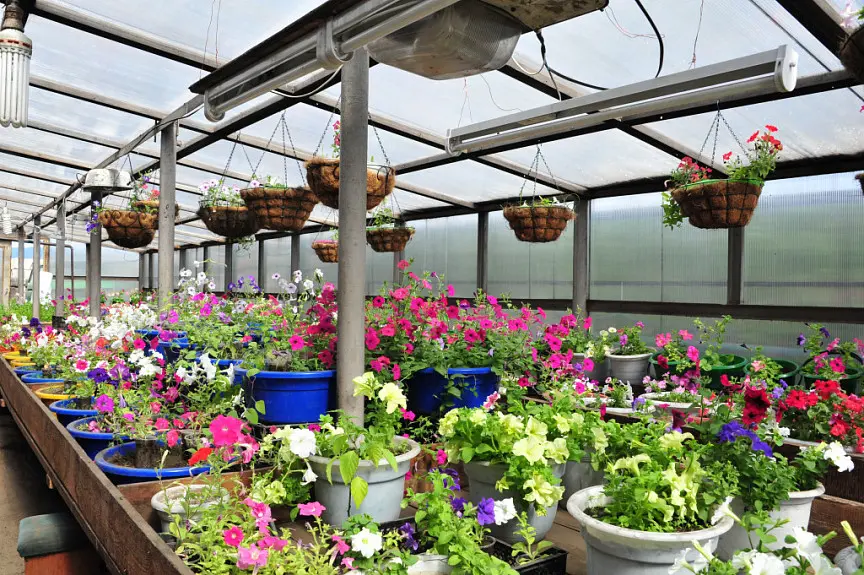
Let’s start with the classic: traditional greenhouses. These are the ones you probably picture when you think of a greenhouse with glass walls, metal frames, and all the bells and whistles.
Here is a small polycarbonate greenhouse suitable for backyard growers.
They’re like the sedans of the greenhouse world: reliable, versatile, and equipped with modern amenities like climate control systems and automated watering.
If you’re looking for a greenhouse that can do it all and you have the budget for it, this is your go-to option.
Unheated Greenhouses
Now, what if you’re more of a minimalist? Enter unheated greenhouses.
These are perfect for those who want to extend the growing season but don’t necessarily need to grow tropical plants in the dead of winter.
It’s like camping with just the essentials. You have protection from the elements, but you’re not lugging around a portable air conditioner.
Unheated greenhouses rely on natural sunlight and are great for hardier plants that can withstand cooler temperatures.
Hoop Houses
Next on our list are hoop houses. Picture a series of hoops covered with a plastic sheet, and you’ve got yourself a hoop house.
These are the pickup trucks of the greenhouse world, no-frills, durable, and get the job done.
They’re easier to set up than traditional greenhouses and are often used for growing vegetables and herbs.
Plus, they’re more budget-friendly, making them a great choice for those just dipping their toes into the greenhouse world.
Cold Frames
Last but not least, let’s talk about cold frames. These are the simplest form of a greenhouse and are perfect for the hobby gardener.
Think of them as the scooters of the greenhouse world, small, easy to manage, and perfect for short trips.
Cold frames are essentially mini-greenhouses that you can place directly over a garden bed to give your plants a little extra warmth and protection.
So there you have it! From the all-inclusive traditional greenhouses to the simple and effective cold frames, there’s a type of greenhouse for every need and budget.
It’s all about finding what works for you and your plants.
Benefits of Greenhouse Farming

So you’re sold on the idea of greenhouses, but you’re wondering, “What’s in it for me?”
Well, let me tell you, the benefits of greenhouse farming are like the perks of a VIP club totally worth it!
From boosting your crop yield to minimizing risks like pests and bad weather, greenhouses are the gift that keeps on giving.
Stick around as we unpack all the amazing advantages that come with greenhouse farming.
Trust me, by the end of this section, you’ll be wondering why you didn’t jump on the greenhouse bandwagon sooner!
Increased Crop Production

Let’s kick things off with one of the most enticing benefits: increased crop production.
Imagine your garden on steroids but in a good way! With a greenhouse, you’re not at the mercy of seasons or unpredictable weather.
You can grow more, and you can grow it faster. It’s like having a second cup of coffee in the morning, you’re just that much more productive.
And who doesn’t love the idea of harvesting fresh veggies or flowers all year round?
Minimized Production Risks
Next up, let’s talk about minimizing risks. Farming is a bit like gambling and you’re always at the mercy of elements you can’t control, like weather and pests.
But a greenhouse acts like a safety net. Bad weather forecast? No worries, your plants are snug and protected.
It’s like having an insurance policy for your garden, giving you peace of mind and a more reliable harvest.
Maximizing Profits
Now, let’s get down to the nitty-gritty: profits. If you’re farming as a business, a greenhouse is like hiring a top-notch sales team that works around the clock.
You can grow out-of-season crops that fetch higher prices, and because you’re producing more, you’re also selling more.
It’s a win-win situation that makes the initial investment in a greenhouse well worth it.
Disease and Pest Prevention
Last but definitely not least, let’s talk about disease and pest prevention.
One of the biggest headaches for any farmer or gardener is dealing with bugs and diseases that can wipe out an entire crop.
But in a greenhouse, you have a controlled environment that’s less hospitable to these unwelcome guests.
It’s like having a security system that keeps out intruders, making sure your plants stay healthy and robust.
So there you have it! From ramping up your crop production to keeping those pesky bugs at bay, the benefits of greenhouse farming are hard to ignore.
Whether you’re in it for the love of gardening or you’re eyeing those dollar signs, a greenhouse has something to offer for everyone.
How Greenhouses Enable Year-Round Farming
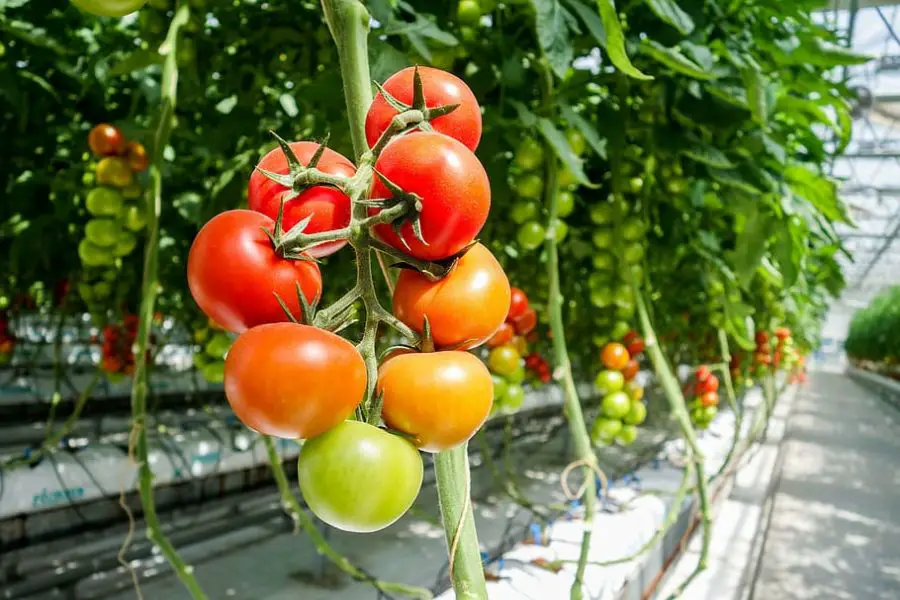
Alright, we’ve talked about the what and the why, but let’s get to the heart of the matter: How do greenhouses actually enable year-round farming?
From mastering the art of climate control to the ins and outs of soil management, we’re about to dive deep into the mechanics that make year-round farming in a greenhouse not just possible, but incredibly rewarding. So let’s roll up our sleeves and get into it!
Climate Control
First up, let’s talk climate control. This is the bread and butter of year-round farming in a greenhouse.
With the ability to control temperature, humidity, and even wind speed, you’re basically playing Mother Nature.
It’s like having a thermostat but for your entire farm. Whether you’re growing tropical orchids or hearty root vegetables, you can dial in the perfect climate for each plant type.
It’s customization at its finest, folks!
Soil Management
Next, let’s dig into soil management. In a greenhouse, you’re not just tossing seeds into the ground and hoping for the best.
You can actually control the soil’s pH levels, nutrient content, and even its microbial life.
It’s like being a chef and knowing exactly how much salt and pepper to add to that perfect dish.
Better soil means healthier plants and healthier plants mean a more bountiful harvest. It’s as simple as that.
Water Conservation
Now, let’s talk about water conservation. In a world where water is becoming increasingly scarce, every drop counts.
Greenhouses allow you to be incredibly efficient with your water usage.
Think of it as having a fuel-efficient car where you’re getting more bang for your buck.
With drip irrigation and even hydroponic systems, you can grow more while using less, making it a win-win for you and the planet.
Crop Rotation and Polyculture
Last but not least, let’s explore crop rotation and polyculture. In a greenhouse, you’re not limited to growing just one type of crop.
You can rotate different plants in and out, which is not only great for the soil but also for pest control.
It’s like having a diversified investment portfolio, if one thing fails, you’ve got backups.
Polyculture takes this a step further by growing multiple types of plants together, maximizing space, and creating a more resilient growing environment.
So there you have it—the nuts and bolts of how greenhouses enable year-round farming.
From climate control to water conservation, it’s a finely tuned machine that makes the most of every square inch and every drop of water. Pretty amazing, right?
Case Studies

Curious to see how all this greenhouse magic plays out in the real world? You’re in luck!
We’re about to dive into some case studies that showcase the incredible impact greenhouses can have.
From chilly climates where you’d never dream of year-round farming to arid regions that make you wonder how anything grows at all, these stories are bound to inspire.
So grab some popcorn and get ready for some eye-opening tales of how greenhouses are changing the game in agriculture!
Greenhouses in Cold Climates
First on our list, let’s venture into the icy realms where traditional farming takes a long winter nap.
In places like Alaska or Northern Europe, the growing season is shorter than a summer fling.
But with greenhouses, it’s a different story. Farmers in these chilly climates are growing everything from leafy greens to tomatoes, all year long.
It’s like having a tropical island in the middle of a snowstorm. The key? Insulated walls, heated flooring, and climate control systems that defy the outside temperatures.
It’s a game-changer for local food production and a lifeline for communities that rely on imported goods. Deep Winter Greenhouses
Greenhouses in Arid Regions
Next, let’s jet off to arid regions where rain is as rare as a four-leaf clover. You’d think farming here would be a lost cause, right? Wrong!
Greenhouses are making the impossible possible. With water-efficient systems like drip irrigation and even hydroponics, these greenhouses are like oases in the desert.
They’re not just growing cacti; we’re talking fruits, vegetables, and even herbs.
It’s like finding a water fountain in the middle of a marathon, utterly refreshing and vital for sustenance.
Urban Greenhouses
Last but not least, let’s take a stroll down city streets where space is at a premium but the desire for fresh produce is high.
Enter urban greenhouses. These aren’t your grandma’s backyard setups; they’re high-tech, space-efficient structures often found on rooftops or even inside buildings.
Imagine stepping out of your apartment and picking fresh basil from the rooftop garden.
It’s like having a farmers’ market right in your own building. These urban greenhouses are revolutionizing the way city dwellers access fresh produce, making farm-to-table a daily reality. Greenhouses Powered by Clean Energy
So there you have it, real-world examples that prove the incredible versatility and impact of greenhouses.
From the frozen tundras to the scorching deserts and even the concrete jungles, greenhouses are making year-round farming a reality. It’s not just a trend; it’s a revolution.
Challenges and Solutions
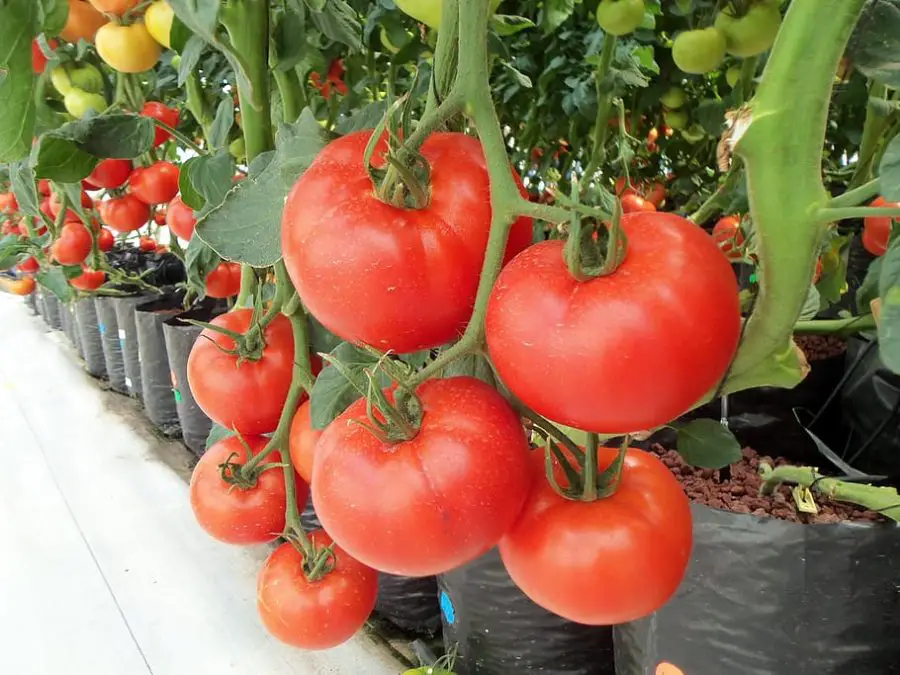
Alright, so we’ve sung the praises of greenhouses, but let’s not sugarcoat it, there are challenges too.
But hey, what’s life without a few hurdles, right? From managing costs to dealing with pests that somehow find their way in, greenhouse farming isn’t all sunshine and roses.
But don’t sweat it; we’ve got solutions for those challenges.
So stick around as we tackle the nitty-gritty problems and offer up some practical fixes.
It’s like a troubleshooting guide for your greenhouse journey!
Initial Cost
Let’s start with the elephant in the room: the initial cost. Setting up a greenhouse isn’t exactly pocket change.
Between the structure itself, climate control systems, and other essentials, the price tag can be a bit of a shocker.
It’s like buying a new car; you’ve got to consider not just the sticker price but also the add-ons and upgrades.
But here’s the silver lining: There are financing options, grants, and even DIY approaches to make it more affordable.
Plus, the long-term benefits often outweigh the initial investment.
So while it might be a big chunk of change upfront, think of it as a long-term investment in your farming future.
Maintenance
Next up, let’s talk maintenance. A greenhouse is a bit like a pet; it needs regular care and attention.
From cleaning the glass to calibrating the climate control systems, there’s a to-do list that never really ends.
But don’t let that scare you off. Many of these tasks can be automated, and others can become a simple part of your routine.
Plus, regular maintenance helps you catch potential issues before they become big, expensive problems.
It’s like going for regular check-ups; a little effort now can save you a lot of hassle later on.
Energy Consumption
Last but not least, let’s tackle energy consumption. Greenhouses, especially those with advanced climate control systems, can be energy hogs.
It’s like running the air conditioner all day, every day. But the good news is that there are more sustainable options popping up, from solar panels to geothermal heating systems.
Some greenhouses are even designed to be energy-efficient from the get-go.
So while it’s a challenge, it’s also an area ripe for innovation and improvement.
So there you have it, the challenges you might face in greenhouse farming and some practical solutions to tackle them head-on.
It’s all part of the journey, and let’s be honest, overcoming challenges is what makes the end result so rewarding.
Future of Greenhouse Farming

Ready to hop in a time machine and explore the future of greenhouse farming?
While I can’t actually take you to the future, I can certainly give you a sneak peek of what’s on the horizon.
From cutting-edge tech to sustainable practices that could change the game, the future of greenhouse farming is looking brighter than ever.
So fasten your seatbelts as we delve into what could very well be the next big thing in agriculture.
It’s like getting a preview of the next blockbuster movie—you won’t want to miss it!
Technological Advancements
First up, let’s talk tech. If you think greenhouses are high-tech now, just wait until you see what’s coming down the pipeline.
We’re talking about smart greenhouses equipped with AI that can make decisions on lighting, watering, and even harvesting.
Imagine a greenhouse that adjusts its own settings based on the weather forecast or the growth stage of the plants.
It’s like having a smart home but for your farm.
And let’s not forget about drones for monitoring plant health or automated systems for planting and harvesting.
The sky’s the limit, and these advancements could make greenhouse farming more efficient and productive than ever.
Sustainability Measures
Now, let’s shift gears and talk about sustainability. As the world grapples with climate change and resource depletion, the pressure is on for agriculture to become more sustainable.
And guess what? Greenhouses are stepping up to the plate. From solar-powered structures to zero-waste water systems, the future is looking green in more ways than one.
Some are even experimenting with vertical farming to maximize space and reduce land use. It’s like turning your farm into a well-oiled, eco-friendly machine.
So there you have it, a glimpse into the future that’s as exciting as it is promising.
With technological advancements making greenhouses smarter and sustainability measures making them greener, the future of greenhouse farming is a story you’ll want to be a part of.
FAQs
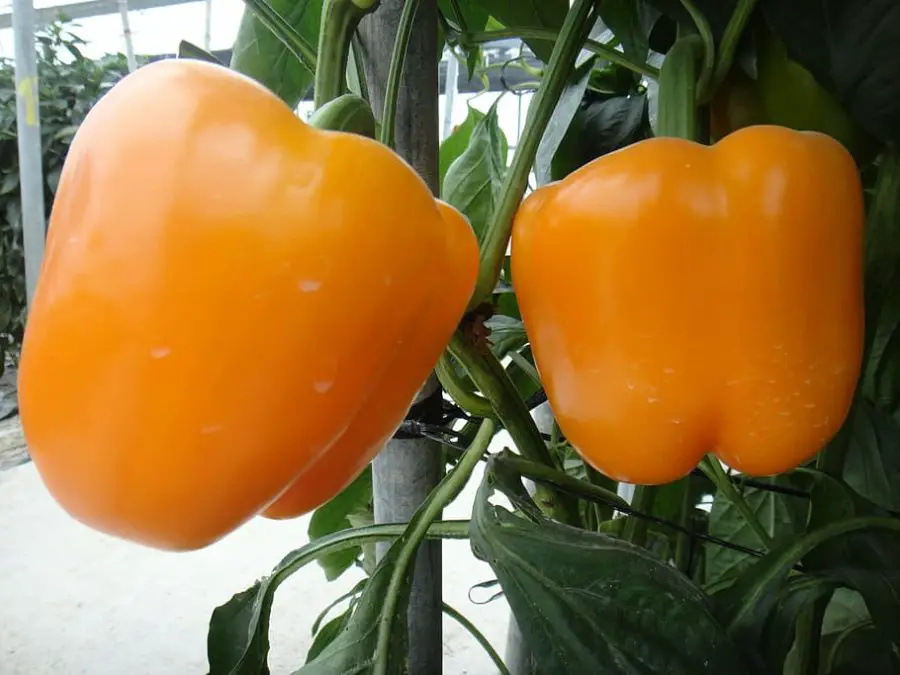
Got questions? Don’t worry, you’re not alone! The world of greenhouse farming can be as puzzling as a Rubik’s Cube sometimes.
That’s why we’ve rounded up some of the most frequently asked questions to help clear the air.
So let’s dive into this FAQ section and untangle some of those burning questions you’ve got. It’s like having a cheat sheet for your next greenhouse quiz!
Q: Why greenhouses are able to grow plants all year round?
A: Greenhouses enable year-round farming by creating a controlled environment that can be adjusted to meet the needs of different plants.
They trap heat and moisture, allowing you to regulate temperature, humidity, and light conditions.
This makes it possible to grow plants even when the outside conditions are less than ideal, like in winter or extreme heat.
Q: Can you grow year-round with a greenhouse?
A: Absolutely, you can! That’s one of the biggest perks of having a greenhouse.
By controlling the internal conditions, you can grow a variety of plants throughout the year, regardless of the season.
It’s like having a magic wand that turns every day into the perfect growing day for your plants.
Q: How do greenhouses help agriculture?
A: Greenhouses offer a controlled environment that boosts crop yield and quality.
They also allow for year-round production, which is a huge advantage for farmers.
Plus, greenhouses can minimize risks like pests and extreme weather conditions.
Think of it as putting your agriculture on the fast track, with fewer bumps along the way.
Q: Can a greenhouse extend the growing season?
A: Yes, indeed! A greenhouse can extend the growing season by providing a warm and stable environment, even when it’s snowing or raining cats and dogs outside.
It’s like adding extra months to your calendar, but just for farming.
Q: Can greenhouses be used in any climate?
A: While greenhouses are versatile, they do have limitations based on climate.
For example, in extremely hot or cold climates, you may need specialized equipment to regulate temperature.
However, with the right setup, you can use a greenhouse in a wide range of climates. It’s all about customization.
Q: What are the ongoing costs of maintaining a greenhouse?
A: Ongoing costs can include electricity for climate control systems, water for irrigation, and general maintenance like replacing worn-out parts.
You might also need to invest in pest control measures. It’s not a set-it-and-forget-it deal; think of it more like a car that needs regular tune-ups.
Q: How do greenhouses impact the environment?
A: Greenhouses can have both positive and negative environmental impacts.
On the plus side, they allow for efficient use of land and water, especially with modern systems like hydroponics.
However, they can also consume a lot of energy, particularly if they’re not designed with sustainability in mind.
The key is to balance productivity with eco-friendly practices.
Conclusion

Alright, folks, we’ve journeyed through the ins and outs of greenhouse farming, and what a ride it’s been!
From the science behind these plant havens to the challenges and future possibilities, we’ve covered a lot of ground.
As we wrap things up, we’ll revisit some key takeaways and maybe even leave you with a few nuggets to ponder.
So, stick around for the grand finale—it’s like the encore at the end of a great concert, and you won’t want to miss it!
Summary of Key Points
So, let’s do a quick recap, shall we? We kicked things off by understanding what greenhouses are and why they’re such a big deal for year-round farming.
We then took a trip down memory lane to see how greenhouse technology has evolved over time.
From the science that makes it all possible to the different types of greenhouses and their benefits, we’ve explored it all.
And let’s not forget the challenges and how to tackle them, as well as the exciting future that awaits greenhouse farming.
It’s like we’ve been on a whirlwind tour, and these are the postcards we’re bringing back.
Final Thoughts
As we come to the end of our journey, it’s clear that greenhouses are more than just glass and metal structures; they’re the future of sustainable and efficient farming.
Whether you’re a seasoned farmer or someone just toying with the idea of starting a greenhouse, the possibilities are endless.
It’s like standing at the edge of an expansive field, ready to sow the seeds of your dreams.
So go ahead, take that step. The world of greenhouse farming is waiting for you, and it’s as promising as it is green.
And there you have it. The curtain falls, but the story is far from over. Thanks for sticking around, and here’s to your own greenhouse adventures!





